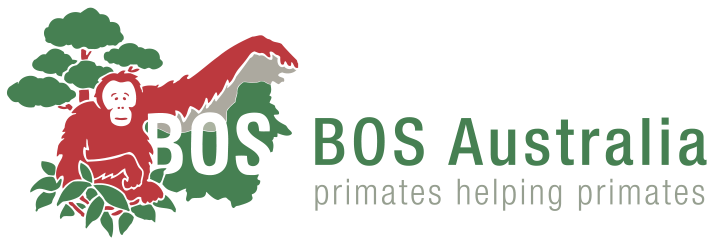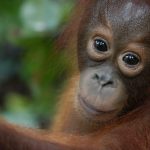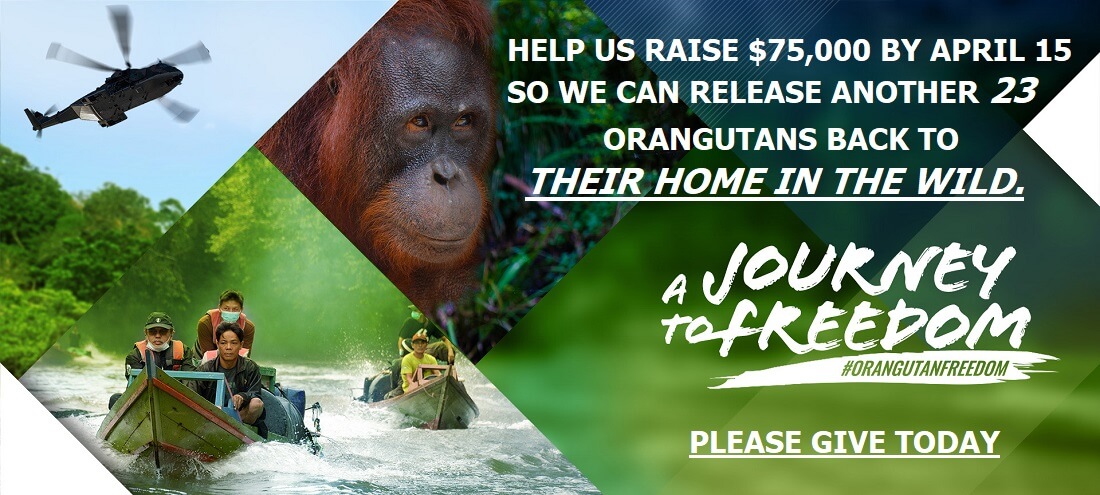MYSTERIOUS NEIGHBOURS

Our Post-Release Monitoring (PRM) team recently searched for orangutans at Puncak Leke in the Kehje Sewen Forest when they caught sight of an unidentified animal. They looked closely at the curious creature and noticed it was rolled up with its head tucked into its body. What was it?
For about an hour, our team waited for the animal to move or change its position so that they could see its face. Finally, they captured a picture of the animal’s face, its body length, and the slightly curved shape of its paws – and could identify it. The animal in question was a binturong (Artictis binturong).
Binturongs are nocturnal and mostly active at night. However, some researchers have found they are also active during the day. This large civet-like animal, referred to as a ‘bearcat’, is an omnivore and opportunistic eater that survives on almost anything in the forest: plant shoots and leaves, fruit, eggs, birds, fish, small invertebrates, and small rodents.
Unique physical features
The binturong is endemic to Southeast Asia. In Indonesia. We find it in Sumatra, Java, and Kalimantan. On the island of Borneo, the binturong lives in lowland and hilly areas, as well as in upstream areas, including around the Kapuas and Mahakam rivers. The binturong has several unique physical features, such as a tail that can function as a fifth limb to grab tree branches and a ‘fake penis’ (pseudo-penis) appendage in females of the species.
The International Union for Conservation of Nature (IUCN) has listed the binturong as a species ‘vulnerable to extinction’, as its numbers have declined by more than 30 per cent over the last 30 years due to poaching and the illegal wildlife trade. The Convention on International Trade in Endangered Species of Wild Flora and Fauna (CITES) also includes the binturong in its Appendix III list. In Indonesia, this species is protected by Regulation 7 of 1999, pertaining to the preservation of flora and fauna.
To preserve the binturong and prevent many other threatened species from becoming lost to this world forever, we, as a society, must help support the Indonesian and global protection efforts as best we can.






